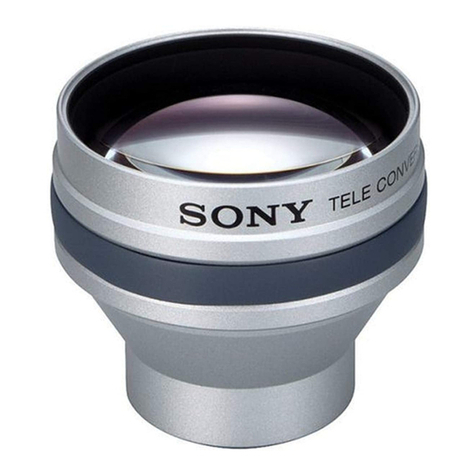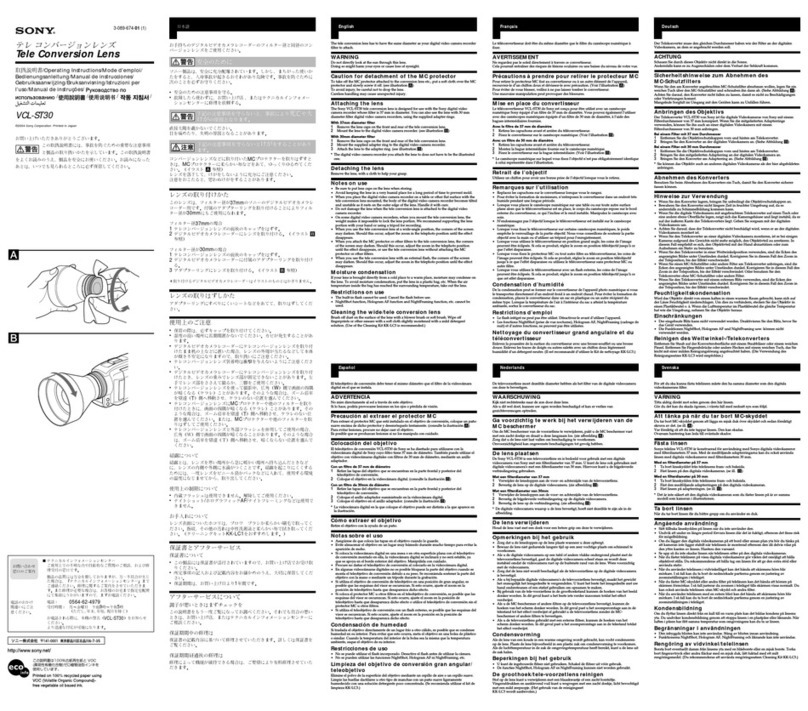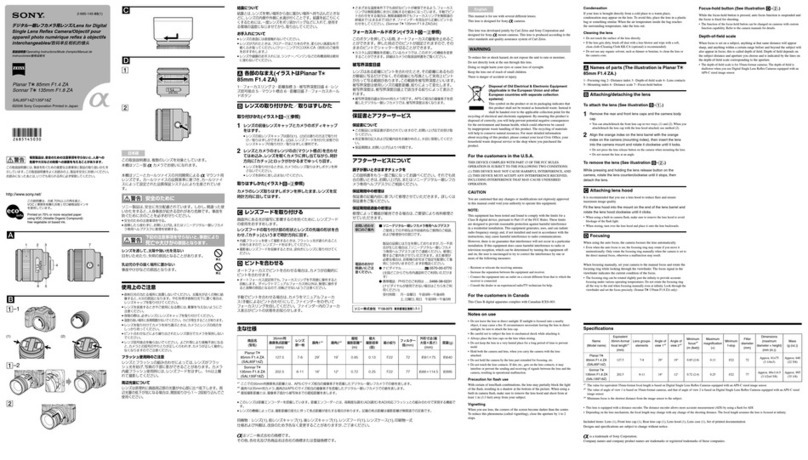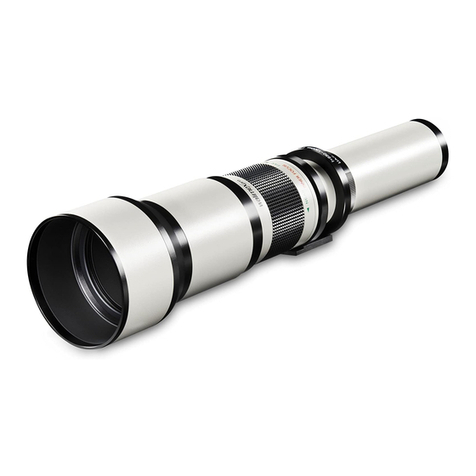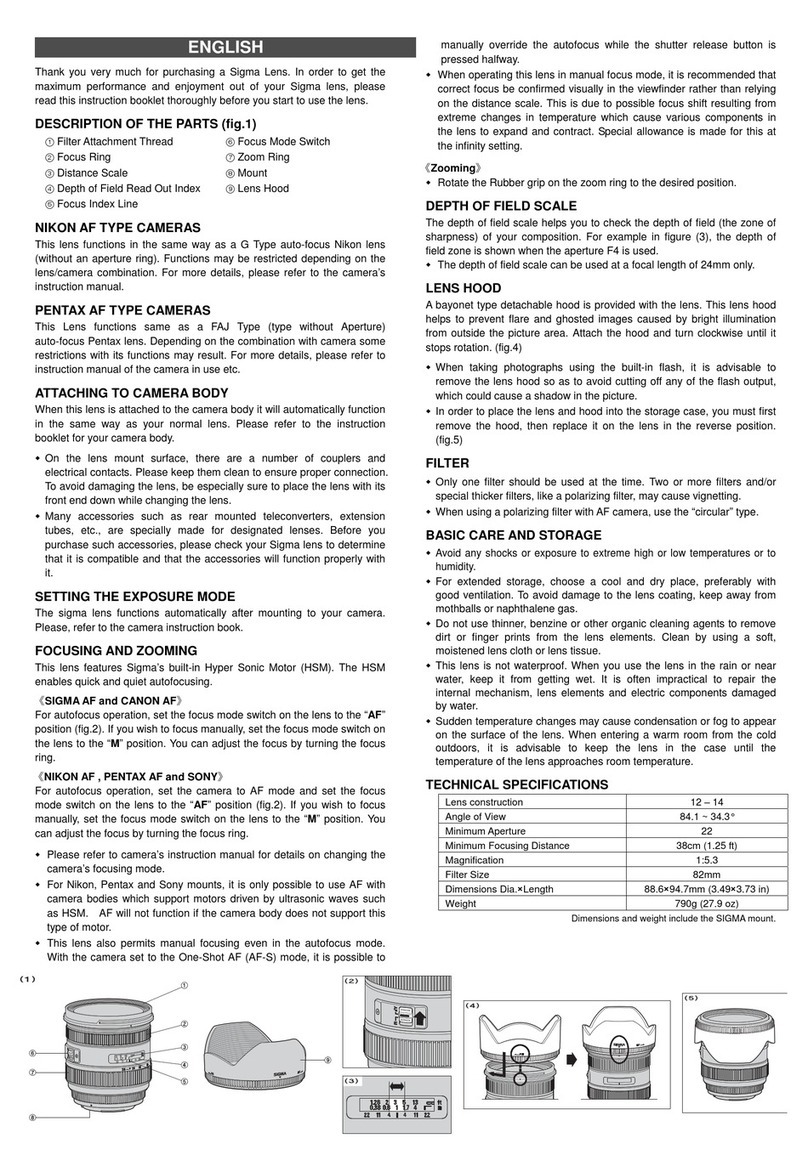3
Your new catadioptric lens or Reflex Mirror lens is a highly developed computer designed product, using
the merits of both reflex optics and refraction optics. This gives you very sharp picture quality with less
color aberration, which is considered the most harmful factor in the field of telephoto photography.
Each lens comes with interchangeable rear insert filters. Optional filters are exclusively designed for the
Reflex Mirror lenses. The proper T mount adapter is threaded onto the back of the fens.
1. Mounting your lens
Your Lens utilizes a universal mounting ring (T2) which allows your lens to fit practically
all SLR cameras manufactured since 1960. Simply attach the specific T2 adapter for your
style camera to the actual lens and then mount to your camera body in the same way as
your existing lens, which your camera is equipped. Also remove your lens the same way
as your exiting lens and consult your camera introduction manual for further details.
After mounting your T2 adapter to the lens, you may have to adjust the T-mounts so that
the top of the lens faces upward. If this is necessary, loosen the 3 small screws located
on the T-mounts and turn the lens until it is in the proper usable position. Make sure to
retighten the 3 screws after you make the adjustments.
2. Focusing the lens
Focusing is accomplished while viewing the subject through the view-finder of your camera and
rotating the focusing ring. Since the aperture is preset, you will find under certain light conditions
a shadow appearance on the split-image section of your focusing screen. In this case, simply
focus on the edges of your subject with the outer center of your fresnel prism.
NOTE: In order to compensate focusing when normal focusing position may differ due to extreme
temperature change, the focusing ring has been designed to allow rotation beyond tile fixed
engraved marks of the distance scale, To avoid error, focusing should always be made while
looking through the viewfinder.
NOTE: No adjustment of focusing is necessary when taking infrared photography, as is required
with normal lenses.
3. Using the viewfinder with the telephoto lenses
The effectiveness of different types of focusing screens varies with the focal length and
maximum aperture of the lens. The range finder of microgrid prisms built into the
ground glass do not work as well with longer focal length lenses as they do with the
normal camera iens and most wide-angle lenses, and may blackout partically or fully
"the center focusing spot." When such as a condition exists, focusing is best done on the
ground glass portion of the viewing screen. On some SLR cameras, Iong telephoto lenses
appear to produce a cut-off image in the upper corners or along the entire upper edge of
the view finder. Actually such viewing cut-off is caused by the size of the camera's mirror
which is adequater for the shorter focal length lenses only. The exposed slide or
negative will be unaffecied by this viewing deficiency.
